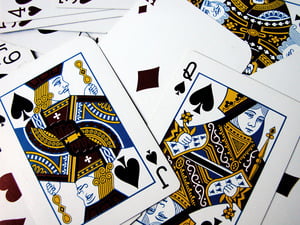When calculating probability, sometimes we have events that can occur at the same times, others can never occur at the same time. Events can either be mutually exclusive or not mutually exclusive. What are these two types of events and how are the probabilities of these events calculated?
Suppose you roll a 6 sided die. Let A be the event that the number is odd and B be the event that the number is even.Since the die is only rolled once, it is impossible for the number that lands face up is both odd and even. The events A and B are said to be mutually exclusive events. If two events cannot happen at the same time, they are said to be mutually exclusive.
For mutually exclusive events, P(A ∩ B) = 0 (∩ denotes the intersection of events, this is read as “Probability of A intersect B” or “Probability of A and B”). If A and B are mutually exclusive, then P(A U B) = P(A) + P(B) (U denotes the union of events, this is read as “Probability of A union B”, also read as “Probability of A or B”).
If two events are not mutually exclusive (they can occur at the same time), then P(A U B) = P(A) + P(B) – P(A ∩ B). From this formula we can determine that P(A ∩ B) = P(A) + P(B) – P(A U B).
Example: Suppose there are 10 pieces of paper in a hat. Each piece of paper has a digit 1 through 10 written on it. Each number is written only once. You reach in the hat and select a piece of paper. What is the probability that the paper has either a 3 or a 6 written on it?
These events are mutually exclusive and each have probability of 1/10 of occurring. Therefore,
P(3 U 6) = P(3) + P(6) = 1/10 + 1/10 = 2/10 = 1/5.
Example: A single card is randomly selected from a standard 52 card deck. What is the probability that the card is the jack of clubs or a diamond?
P(jack of clubs) = 1/52, P(card is a heart) = 13/52 = 1 /4 Therefore,
P(jack of clubs U card is a heart) = 1/52 + 1 /4
= 1/52 + 13/52
= 14/52
= 7/26.
Example: A single card is randomly selected from a standard 52 card deck. What is the probability that the card is a spade or a non face card?
These events are not mutually exclusive. There are 13 spades in the deck, therefore P(card is a spade) = 13/52 = 1 /4. There are 12 face cards in the deck, therefore there are 40 non face cards in the deck and P(non face card) = 40/52 = 10/13. The probability that the card is a spade and a non face card is 10/52 = 5/26 (the possible outcomes are ace through 10 of spades).
Therefore, the probability that the card is a spade or a non face card is
P(card is spade) + P(non face card) – P(card is spade and not a face card) = 1 /4 + 10/13 – 5/26
= 13/52 + 40/52 – 10/52
= 43/52
Example: Suppose 2 six sided dice are rolled. What is the probability that the sum of the numbers face up on the dice is a multiple of 3 or even?
These events are not mutually exclusive.
The outcomes that are multiples of 3 are (1,2), (2,1), (1,5), (5,1), (2,4), (4,2), (3,3), (3,6), (6,3), (4,5), (5,4), (6,6). We know there are 36 possible outcomes in the sample space, therefore P(multiple of 3) = 12/36 = 1/3. The outcomes for the event that the sum on the dice is even are (1,1), (1,3), (3,1), (2,2), (1,5), (5,1), (2,4), (4,2), (3,3), (2,6), (6,2), (3,5), (5,3), (4,4), (5,5), (6,4), (4,6), (6,6).
Therefore, P(even) = 18 36= ½.
The outcomes for the event that the sum on the dice is a multiple of 3 and even is (1,5), (5,1), (2,4), (4,2), (3,3), (6,6). Therefore, P(multiple of 3 and even) = 6/36 = 1/6.
Putting it all together, we get P(multiple of 3 or even) = 1/3 + ½ – 1/6
= 2/6 + 3/6 – 1/6
= 4/6
= 2/3
There is a clear distinction between mutually exclusive and not mutually exclusive events and how their probabilities are calculated. The examples in this article should make understanding this topic easier.

